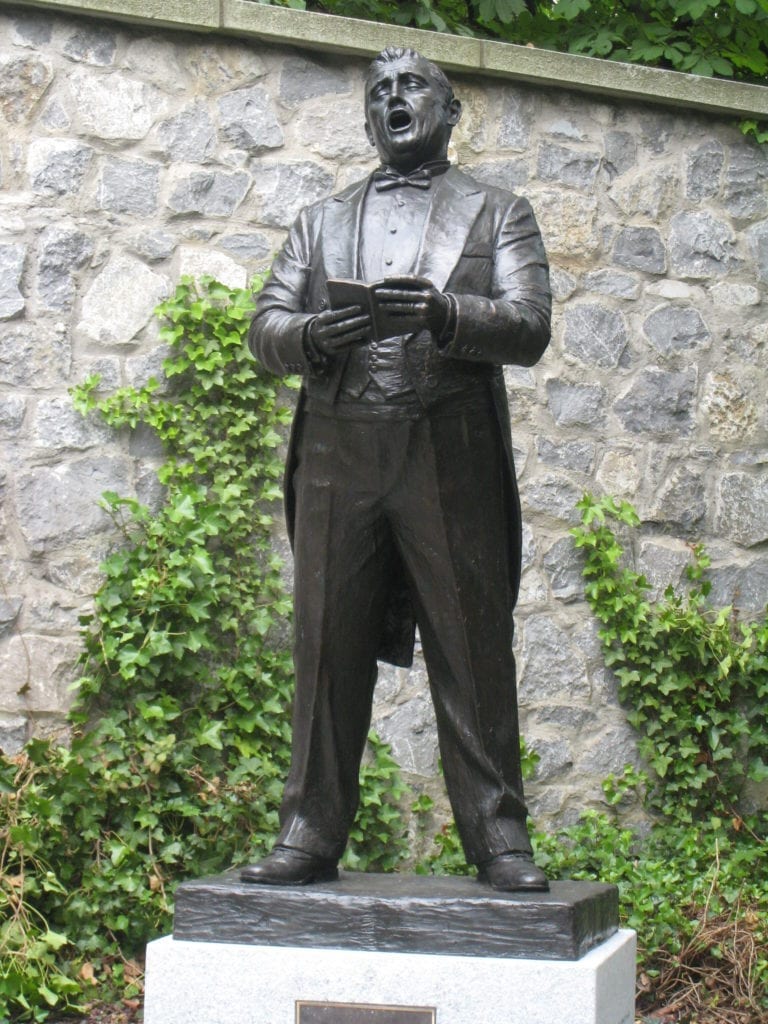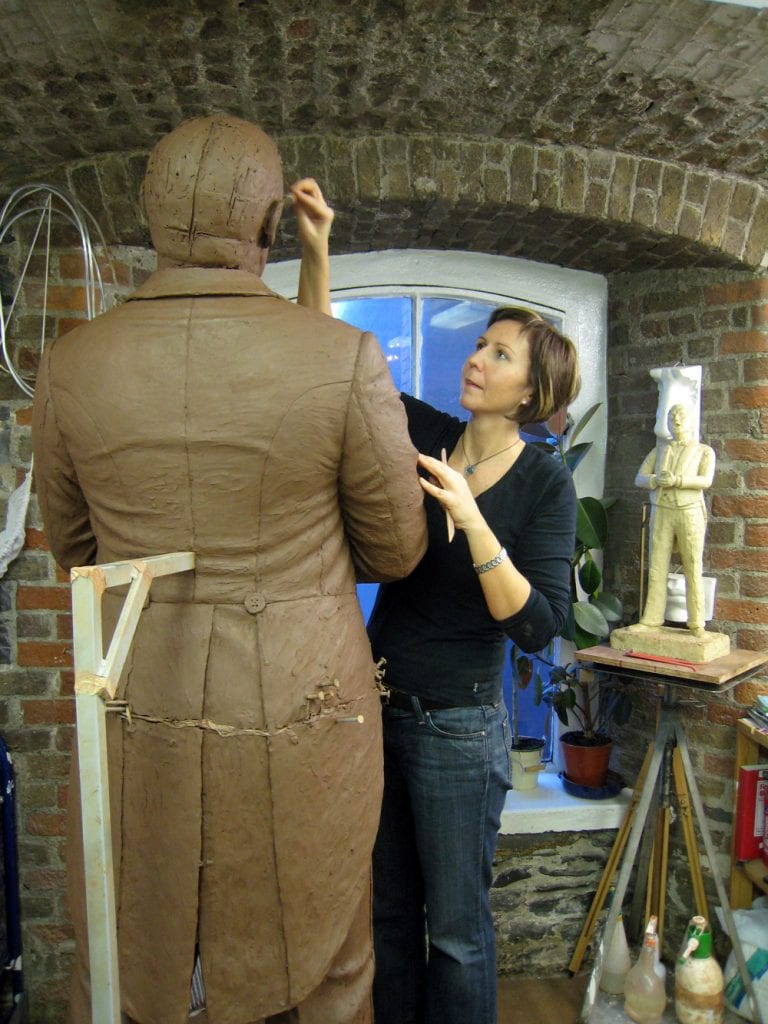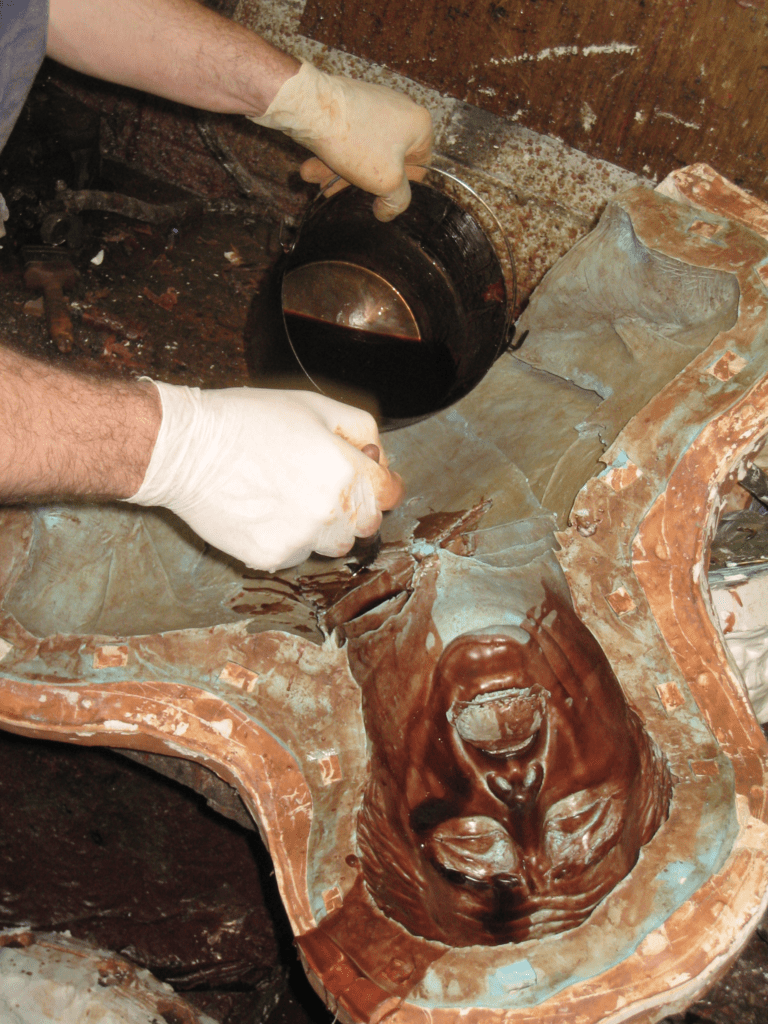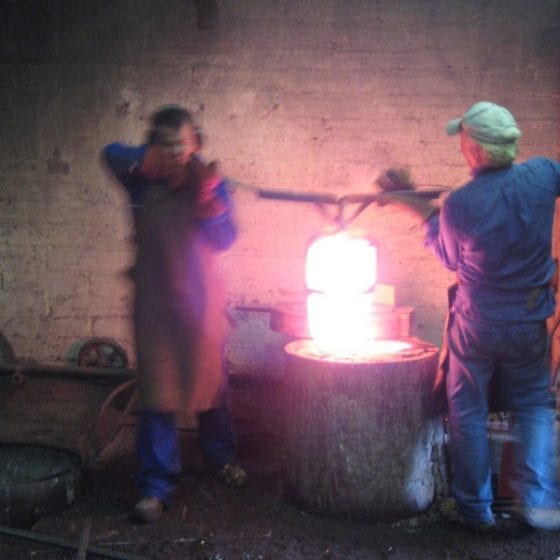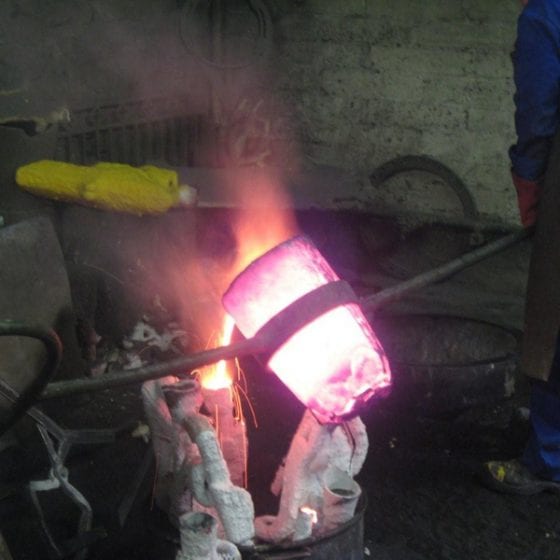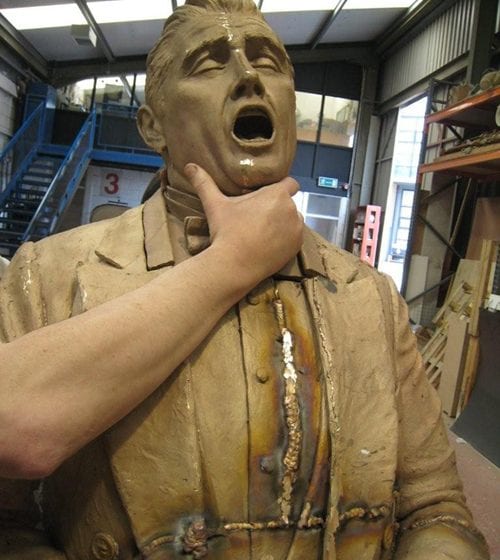Elizabeth O’Kane works with a method of bronze casting known as lost wax. This method is complicated and labour intensive, requiring much interaction between the artist and the foundry. From start to finish there are roughly five stages. These can be simplified as positive, negative, positive, negative, positive.
1. The original sculpture is modelled by the artist in clay. This is the first positive. Any material can be used such as polystyrene, wax, wood, stone, etc.
2. Next a mold is be made of the sculpture. Several coats of liquid silicone rubber are painted onto the clay surface to copy the exact features of the sculpture. Once the silicone sets, plaster is painted over this, to hold the silicone in place, and is allowed to dry. This mold forms a negative of the sculpture. The plaster and silicone sections are then carefully removed from the original sculpture.

3. Melted wax is brushed into each half of the silicone mold. The two halves of the mold are joined together and hot wax is poured into an opening in the mold to seal the sections together, any excess wax is poured out. When the wax cast hardens the plaster and silicone are carefully removed to reveal a hollow wax positivecopy of the original sculpture. The wax sculpture is refined and “chased” by the artist.

4. Wax rods, or “sprues”, are attached to the hollow wax sculpture, and a polystyrene cup is attached to the top of this: these will be the eventual channels for pouring the bronze. The sprued wax is dipped in a liquid ceramic mixture (covering both the inside and outside of the wax) and dusted with silicone sand (inside and out) to strengthen the ceramic covering. This is allowed to dry. The process is repeated about seven times. When completely dry it is fired in a hot kiln. This strengthens the ceramic shell and allows the wax to burn out (hence the name “lost wax”) leaving a hollow negative “ceramic shell”. The ceramic is allowed to cool.
5. Molten bronze is poured, at 1150º C, into the hollow ceramic shell through the hollowed sprues and cup area. When the bronze cools the ceramic shell is hammered off and sand blasted to reveal the bronze cast, or final positive. The sprue bars, now bronze, are cut off and any necessary welding is done. Metal chasing grinds away any weld marks. The bronze is polished to the desired “finish”.
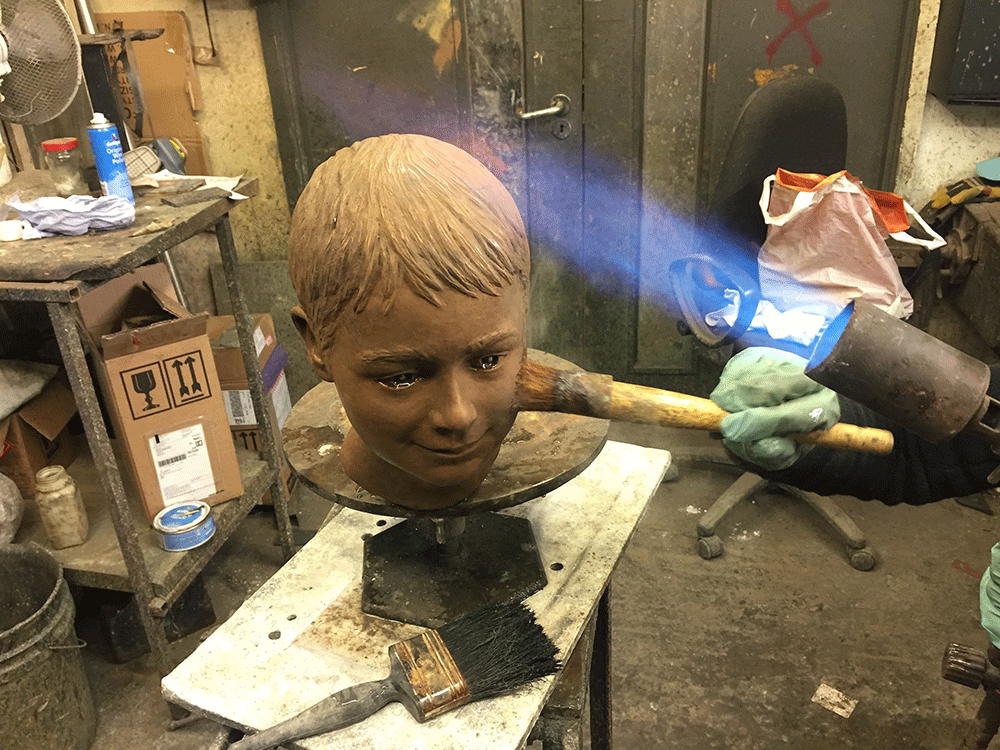
6. The final stage is “patination” or colouring. Chemicals are applied to heated metal to obtain the desired colour or “patina”. This is the speeding up of the ageing process that would occur naturally when exposed to different weather or soil conditions. The patina is very delicate and so the bronze is waxed to preserve the patina.

